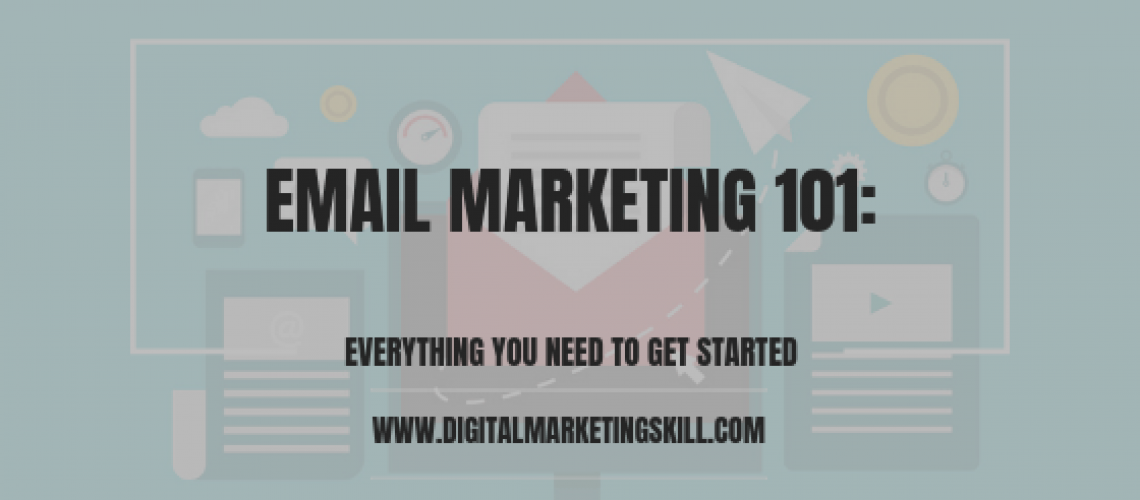Email marketing has become an essential tool for businesses, since the introduction of the Internet to the world. Yet, many people are still unaware of the amazing potentials of email marketing or have not taken time to learn the best strategies to doing email marketing right.
This is one of the major reasons companies take time to hire digital marketers who actually know how to use email marketing strategies to scale up business growth.
The opportunity, therefore, lies in the ability of newbie digital marketers to learn how to implement industry best email marketing strategies that will make you become more employable by willing companies.
You can be among these lucky marketers if you take the email marketing class in our digital marketing course.
(Click here to learn how to get started)
Are you registered yet? Yes? Great Let’s go on…
How We Define Email Marketing For You

[bctt tweet=”Defined simply, email marketing is a digital marketing strategy that involves an internet marketer or internet marketing company sending direct promotional and commercial messages and other resources to a group of persons within their target demography in order to achieve set advertising goals.” username=”dmsinstitute”]
This definition seeks to suggest that email marketing campaigns are purposeful and aimed at achieving an advertising goal, rather than a mere sales report email sent to your boss after the day’s work.
Email marketing, also called direct email marketing, is also a form of direct marketing that uses an electronic mailing system as a means of creating communicational relationships with a commercial audience.
In its simplest, yet broadest sense, any email sent to a potential or existing customer qualifies as email marketing.
[bctt tweet=”As an internet marketing operation, email marketing is essentially the same as direct mail, except that instead of sending mails via the postal service and with little marketing motives, messages are sent electronically via email using many email marketing tools and services and with marketing goals.” username=”dmsinstitute”]
Highlighted simply, email marketing follows an action chain of setting your marketing goals, building your email list, selecting the campaigns (emails) you wish to send, creating and sending the campaigns and measuring your results for improvement.
Truth be told, it’s less technical than some other internet marketing channels but way more technical than highlighted above.
Email Marketing Is Still Relevant

These days, social media marketing and many other internet marketing operations have contested for customer acquisition and retention supremacy with email marketing.
Get 50% Discount to Master ALL Aspects of Digital Marketing That Can Earn You $2,500 - $5,000 a month (Even if you are a complete beginner!)
Our students that intentionally implement what they learn from our digital marketing course make back the entire course fee within a single month or more after completing our course because our course gives them many income generating options with unlimited earning potential with no age or location barrier. The best part is no technical skills are required.
An opportunity to change your lifestyle and make money working from anywhere in the world. The results our students get from our digital marketing course prove this could be applied to any market or country and that it is designed for any skill level and work background.
*By signing up, you agree to our privacy policy and terms of service.
While these other marketing channels are excitingly new and viable, email marketing benefits cannot be ignored.
More so, these benefits and justifications for the use of email marketing continue to seem more convincing, especially with the statistics that prove the success of email marketing in recent studies.
For instance, according to a study conducted by HostPapa:
- [bctt tweet=”94% of Internet activity is spent on email use, while only 61% use social media and 83% use search engines. This means that email marketing provides the largest audience for anyone who intends to use it. ” username=”dmsinstitute”]
- In 2012, email marketing delivered 4000% returns on investment (ROI) to users. This means that email marketing is a win-win for you.
- Also, 75% of online adult users say that they prefer to use email marketing as their marketing channel.
- People check their emails as a complementary activity. 69% do it while watching TV, 57% do it while in bed, while 82% do it while at work. This means some more bonus points if you wish to try out email marketing.
- Consumers actually prefer to receive marketing offers via email, rather than on social media. 50 percent prefer to be contacted by brands via email.
Why You Need to Do Email Marketing
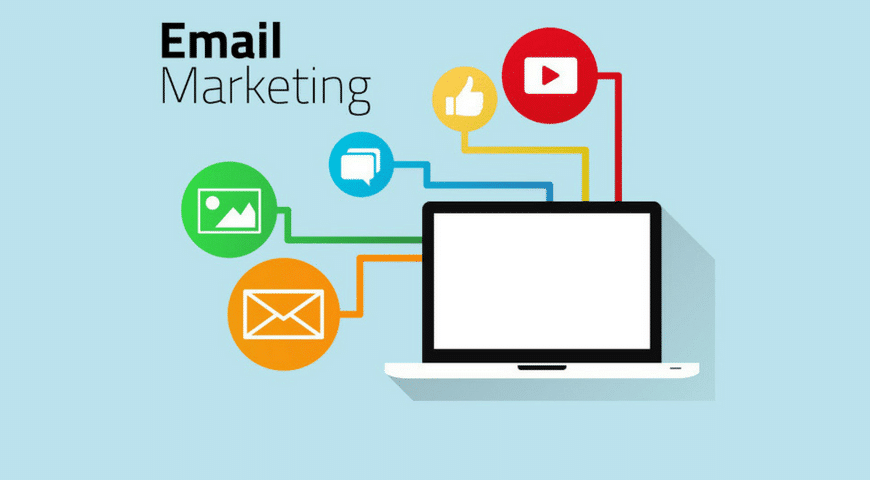
If you are still not aware of the tremendous benefits of email marketing or you still don’t know how why email marketing is necessary, then you should learn more from our digital marketing training, where we’ll teach you the why and how more detailed.
But first, here’s why you need to learn how to do effective email marketing today…
Email Marketing Saves You More Money

Apart from being easy, and more effective, email marketing is also inexpensive and cost-effective.
[bctt tweet=”Whether you’re a big corporation with huge marketing budgets, or a small business with low marketing spending, email marketing allows you to reach a large number of existing and potential consumers at a rate of nearly nothing per message.” username=”dmsinstitute”]
Email Marketing Is Action-Oriented

Think about this! Emails open transactional relationships by nature.
Have you not realized that whenever you receive emails, you are psychologically prompted to reply, forward, click-through, sign-up, fill a form, open a link or even request a product or service?
This is because emails prompt you to perform certain actions whether we like it or not. Email marketing is not different at all.
With this channel, your promotional messages prompt your subscribers to perform the action that you require them to perform.
Email Marketing Gives More Profitable ROI
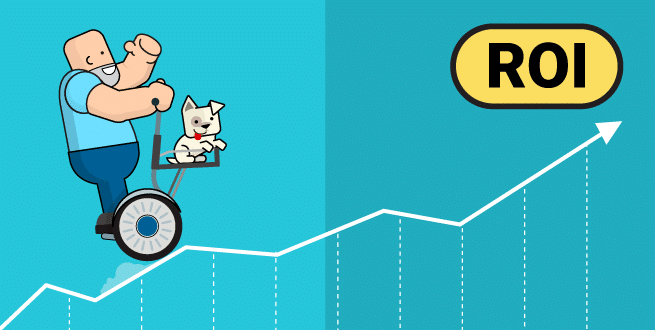
Seeing that email marketing has the potentials of reaching more audience and driving more conversions, it would make sense that it is also the most profitable marketing channel to drive ROI.
Email marketing yields an average 4,000% return on investment for businesses.
This is major because email marketing, unlike other channels, allows you to send personalized and customer-centered relevant messages to your subscribers that convince them to carry out your expected action.
Email Deliverability Is High
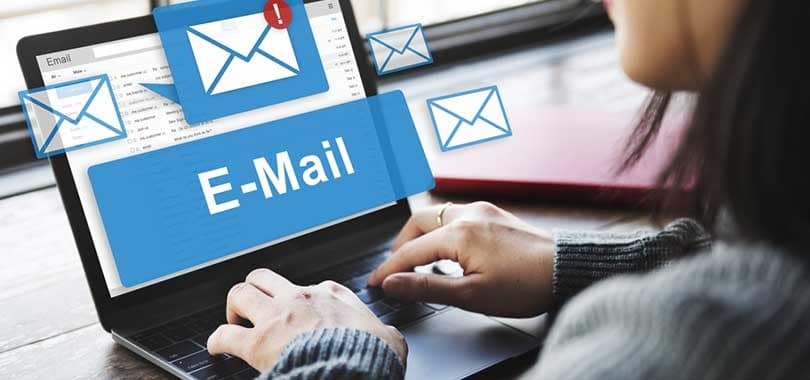
If as an internet marketer, you had to choose between adding a subscriber to your email list and getting a new like on your Facebook page, Forrester Research says you should go for the email subscriber every time.
Here’s why…
[bctt tweet=”97%+ of emails are delivered to intended inboxes, while only 2% of your Facebook fans see your posts in their News Feed, making it less likely for you to get followership, let alone conversions.” username=”dmsinstitute”]
Email Marketing Is Less Spammy
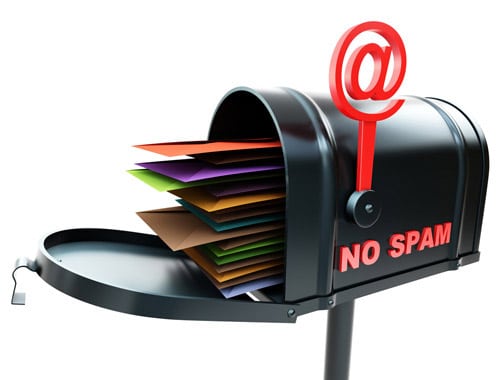
Someone somewhere is probably disagreeing with this. Truly, these days, marketers engage more in promotional emails that get too spammy and put potential customers off.
Nonetheless, fortunately for internet marketers who embrace best email marketing practices, email marketing can be less spammy and more effective for them.
This is because your email subscribers have signed up to your list and have explicitly permitted you to communicate with them constantly.
[bctt tweet=” With the permission of your subscribers in hand, and a working strategy to work with, you can send promotional emails to potential clients and expect that they would most likely respond with the action that you expect.” username=”dmsinstitute”]
Email is the proven marketing channel to ensure your audience gets your message and perform your expected action.
Emailing Is Addictive

For many people, social media is still casual communicational platform for building personal and lasting relationships. These days, only a fewer percentage of total social network usage consists of business users.
People largely log in to social networks to manage their accounts, upload photos and videos, say hi to friends and family and more friendly engagements.
For emails, however, engagements are mostly corporate and business centered.
As such, people readily expect to receive professional resources and content in their inboxes. And what’s most interesting is that almost every internet user is doing this.
[bctt tweet=”With high usage, deliverability and audience reach, your next promotional content would do better via email marketing.” username=”dmsinstitute”]
Email Marketing Results Are Stable

Remember MySpace? Where is it today?
Between 2005 and 2008, MySpace was the largest social networking site in the world, but today, the site is struggling to pick up with the pace of other social networking channels, after losing half of their monthly visitors in 2010.
Imagine if you’d invested significant amounts of time and money building an audience on the platform, only for it to ghost on you.
Email, on the contrary, has a long history of stability. The consistency is crazy. The first promotional email campaign was sent in 1978 to 400 people, and email has been growing consistently since.
[bctt tweet=”Today, more email advertising campaigns are being sent, more companies are providing email marketing services, potential customers are increasingly digesting promotional content and email marketing is generating more revenue than any other platform.” username=”dmsinstitute”]
Email Marketing Results Are Measurable

There’s no guesswork in email marketing…
None at all…
[bctt tweet=”When you use any email marketing software solution, it allows you to track open rates (who opened your email), bounce rates (the rate at which your emails were not opened), click rates (whether people are clicking on your CTAs and the rate), as well as many other metrics.” username=”dmsinstitute”]
This allows you to easily get a picture of how your email campaigns are doing, make adjustments and improve your effectiveness.
This insightful reporting value is not readily available in some other internet marketing channels like social media.
Email Marketing Is Mobile
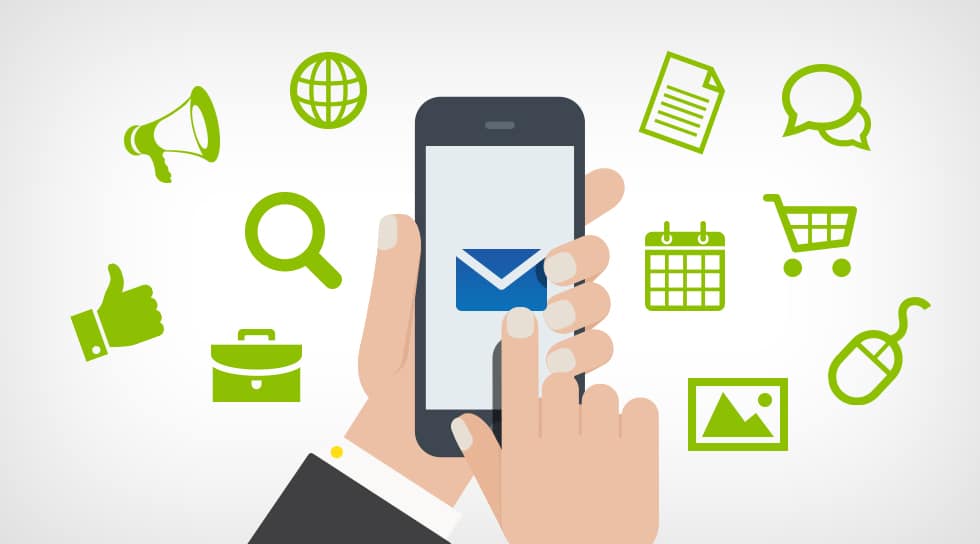
Mobile internet usage has increased tremendously to over 3.7 billion unique users in 2018 alone. Meanwhile, email is the number one activity among mobile users with a 55% mobile usage.
Armed with this huge amount of potential customers carrying your promotional ad in their pockets, your chances of raking in huge revenue from your email marketing efforts are very high.
Types of Email Marketing Campaigns
Here, we’ll focus on the most common email campaigns that drive the most engagement and conversions.
Welcome emails: Welcome emails are the first emails that you send to your subscribers once they sign up to your subscriber’s list. It is usually sent after they’ve confirmed their email addresses.
Since it is your first email communication with them, try to make a lasting and positive first impression. It will determine how they’d react to your subsequent emails.
Marketing Offer Emails: These are emails that you send to your subscribers in order to make a purchasing decision.
They usually come with promotional offers and discounts to encourage potential customers to make the decision that you expect.
For instance, you can offer coupons, announce new arrivals, special product prices, etc.
Email Newsletter: An email newsletter is an email distributed regularly to keep subscribers informed about a chose topic of interest or value offering.
Newsletters, unlike marketing offer emails, are usually sent to communicate with existing customers and not to acquire new leads or customers.
Announcement Emails: Have you got that newly designed product in the pipeline that you’d like our subscribers to know about? Or your company just won an award that you’d like to share with your subscribers?
Then try sending out announcement emails to keep them updated with new happenings in your company.
Event Invitation Emails: Planning an event, company retreat, fundraiser, or product launch, an event invitation email is that campaign designed to increase awareness of your event and encourage people to attend it.
How-to Emails: How-to emails are like tutorials and tips emails. They allow you to send instructive and educational emails that are valuable to your subscribers in a way that also has relevance to your business.
For instance, you can send tips and how-tos on new product features, version updates, and other puzzling issues around your business niche.
Since customers usually purchase businesses that solve their problems, tutorial emails are a good way to give them value for profit in return.
How To Get Started With Email Marketing

Getting started with email marketing is one thing while sustaining your efforts is another.
Here, you’ll learn the general and most fundamental tips on how to get started as a newbie in the email marketing space. Click here to read a more detailed post on how to start email marketing step-by-step.
Step 1: Define Your Marketing Goals

You want to start off with first defining your marketing goals. Stating and understanding why you need email marketing and what you intend to do with it.
Before jumping in, you should take a minute to think about your goals, what you really want to achieve with email, whether your audience fits the email marketing approach, the type of campaigns they’d like, who you target, how you intend to measure success and many more.
Step 2: Build Your Email List
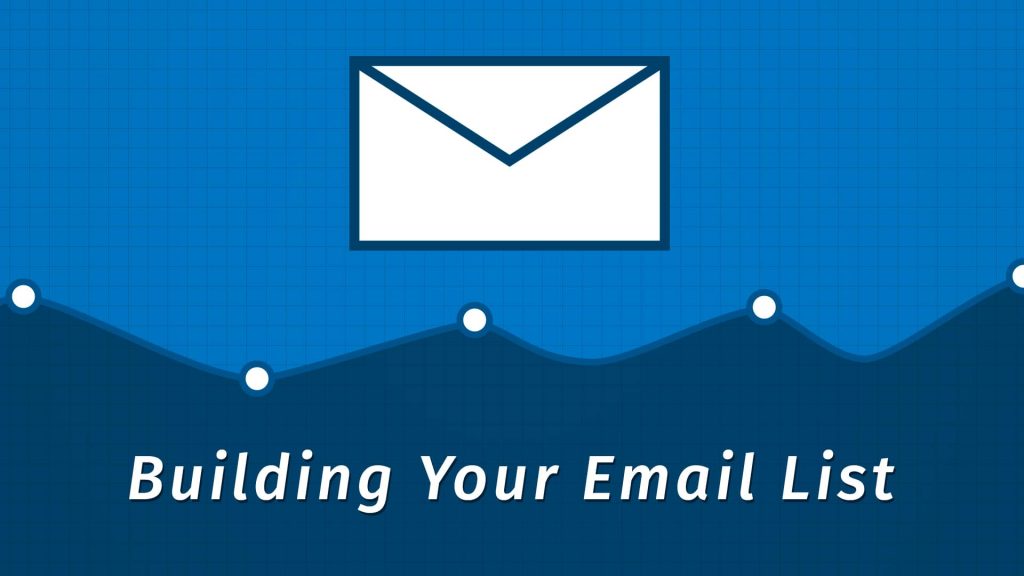
Now that you have defined your email marketing goals, what you should do next is to choose an email marketing solution to allow you build your list (list of people who’ve subscribed to your email campaigns) as well as create campaigns that meet your goals.
Depending majorly on your set email marketing goal, you can either import your [eafl id=”8990″ name=”Mailerlite” text=”list”] from your existing pool of subscribers or create a new email list from scratch.
Step 3: Select a Goal-Oriented Campaign

Armed with your list in hand, and an email marketing goal that maps out clearly what you hope to achieve, how and the needed resources, you want to now choose the type of email marketing campaign to use as related to your goal.
For instance, if your goal is to inform your potential clients about a product feature, you should consider sending tutorial emails that are instructive and educational.
Or try sending out coupons or price slash offers in give-away marketing offer emails to inform your potential customers about your new freebie.
Quick tip, give-away emails actually do better with increased open rates, clicks and conversions.
Step 4: Create Your Campaign
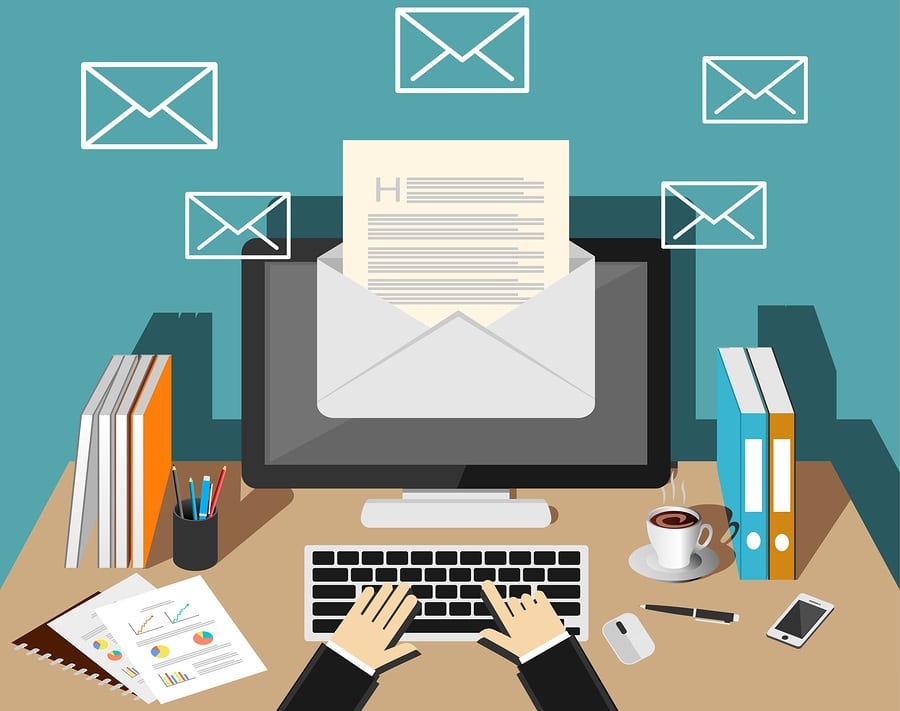
After selecting the email type that best suits your brand goals, you now need to start writing and creating your marketing email.
Email tools like [eafl id=”6657″ name=”GetResponse” text=”GetResponse”] with an easy-to-use drag and drop email builder, making it amazingly easy to create beautiful and profitable email marketing campaigns.
Try these tips on best email marketing practices:
- Make your campaign easy to read.
- Ensure your campaign is less spammy and more valuable to your leads
- Communicate with trust and thought leadership
- Make it easier for your potential customers to convert and make the expected actions
With [eafl id=”8988″ name=”Getstencil” text=”Stencil’s”] affordable plans, mind-blowing features and a huge library of email design templates, you can create stunning, beautiful and amazing email campaign materials. You can [eafl id=”8988″ name=”Getstencil” text=”click here to try their awesome free plan.”]
Step 5: Determine What to Measure

So, your first email marketing campaign is out and has been delivered to your subscribers, now what next? You should measure, measure and measure the performance of your campaign against the number of leads it converts.
Ordinarily, your email marketing solution should come with an analytics report feature to help you gain deep insights and data.
Generally, email marketers measure these metrics:
Open rate: The number of unique subscribers who opened your campaign.
Bounce rate: The number of email addresses to which your campaign could not be delivered (for many different reasons).
These days, many email marketers prefer to use [eafl id=”9753″ name=”Neverbounce” text=”Neverbounce”] to verify thousands of email addresses in order to reduce bounce rate.
Their flexible plan allows you to only pay for what you use so that you can reach more customers at minimum cost. [eafl id=”9753″ name=”Neverbounce” text=”(Click here to read their very cost-effective pricing plan.)”]
Click-Through Rate: The percentage of people who opened your campaign and clicked on a link or CTA.
Unsubscribe rate: The percentage of people who unsubscribed from your email list through this campaign.
Spam complaints: The percentage of people who blacklisted your campaign as Spam by clicking the ‘Mark as Spam’ buttons in their chosen email client (e.g., Gmail, Yahoo Mail, Outlook, etc.).
Shares: The number of people who forwarded your campaign to a friend (using the forward icon in your email template) or shared it via social networks like Twitter and Facebook.
These metrics give you total control of the performance of your campaigns, allowing you to also compare campaign performances and optimize campaign effectiveness and conversion rate.
Advisably, you should never stop measuring and improving your operations.
[bctt tweet=”It is because we understand that measurement and reporting is one of the most dreaded aspects of digital marketing, that we have curated a fail-proof and 99.9% effective email marketing analytics and measurement class in our digital marketing course.” username=”dmsinstitute”]
Heads up! These 13 powerful email marketing tools will ensure that you make the most ROI out of the channel with the less promotional cost.
We’re hoping that you’ll take the course here and do more with email marketing.
Email Marketing Do’s And Don’ts

Now, let’s get into some useful tips and avoidable pitfalls in email marketing.
Email marketing, like many other internet marketing channels, has its own fair share of red and white flags. Many times marketers, even the experienced ones, tend to commit more mistakes than you’d expect.
Here, you’d learn the best practices to getting your email across to your subscribers, preventing pitfalls and utilizing the right opportunities.
Let’s get started!
- Don’t buy subscribers lists. Try to build your email list the right way using sign-up forms, etc.
- Don’t leave your new subscribers waiting before your first email. Try to send welcome emails and subsequent emails immediately after they sign up while they are still piping hot.
- Use catchy and attention-grabbing pre-header texts that truly encourage subscribers to open your emails. Don’t forget to make a good first impression with your pre-header texts.
- [bctt tweet=”Don’t send the same emails to all your subscribers. Try to segment your list according to target demography, journey stages, time zones, and many other segments. It helps to communicate with the pace of your leads.” username=”dmsinstitute”]
- Learn to personalize your message. Don’t send all your emails to all your subscribers the same way. Speak to them in their language, taste, and persona. For instance, starting your email with their first name following the greeting is a good way to go. Try “Hello Jude” instead of “Hello all”. Personalization increases the open rate by 26%, by the way.
- Send messages according to your when it’s most likely that your subscribers would not only receive but also open them. Don’t use general time zones because they reduce the likelihood of an open rate.
- Don’t send one-off disconnected emails that really do not add up. Use email marketing automation tools to prepare and send regular messages that warm-up and mature your leads into customers over-time.
- [bctt tweet=”Don’t send your messages without thoroughly looking out for typos, broken links, misdirected CTAs, unclear images, and many other errors. This is one major red flag so you should review every email before you send it out.” username=”dmsinstitute”]
- Measure, measure and measure your email campaign performance in your solution’s analytics reporting platform.
Common Terms in Email Marketing

Email Service Provider (ESP)
ESP is an acronym that stands for Email Service Provider.
An [eafl id=”6657″ name=”GetResponse” text=”ESP”] is any software service or solution that helps email marketers plan, create, send, measure and manage their email marketing campaigns.
Last we checked, [eafl id=”6657″ name=”GetResponse” text=”GetResponse”] is one of the most preferred ESPs with flexible and affordable plans that empower you to save more and do big things with your next email campaign. You can also read how to use the tool here.
Marketing Automation
Marketing automation, in relation to email marketing, refers to the process of an email marketing software sending email campaigns to your customers and prospects based on a set of triggers you have pre-defined.
Think of it as your intuitive virtual assistant software that sends out your organized emails even in your absence.
Cool right?
Multivariate Testing
Multivariate testing is a method of testing different variables in an email to find out what works best.
Different audiences respond better to different images, colors, copy, font, offers, etc., so marketers will use this to see which combination is ideal in leading to the end goal.
A/B Testing
Also called split testing, A/B Testing is used to consider how small differences in a marketing campaign might influence customer behavior. This might be the title of a newsletter or email, the text for a banner advert, the text on a call-to-action button or the layout of a web page.
Bounce Rate
Bad news…The bounce rate is not the amount of time a ball bounces. Sorry!
More interestingly to email marketers, bounce rate refers to the rate at which your emails are not delivered.
There are two types of bounces. Soft bounces occur when some technical hitches have prevented your email from delivering.
Hard bounce, on the other hand, as the name implies, occurs when your email address has been blacklisted by a subscriber to prevent your emails from delivering to them.
Click-Through Rate
As explained earlier, click-through-rate is a metric used to measure how many people clicked on an image, hyperlink, or CTA in your email.
Remember, your ESP should provide reporting to allow you to monitor the CTR of each of your campaigns.
Email Sponsorships
Buying ad space in an email newsletter or sponsoring a specific article or series of articles. Advertisers pay to have their ad inserted into the body of the email.
Landing Page
A landing page is a lead-capturing page on your website that is linked to from an email to provide additional information directly related to products or services promoted in the email’s call-to-action.
As the name implies, a [eafl id=”8991″ name=”Elementor” text=”landing page”] is where your emails direct your leads to, so that they can perform an action.
Open Rate
This refers to the percentage of emails opened in an email marketing campaign, or the percentage opened of the total number of emails sent.
Opt-Out (or Unsubscribe)
When a subscriber chooses not to receive email communications from you, the sender anymore, and requests removal from your email list, they have requested to unsubscribe from your list.
It is legally required that you provide a clear way to opt-out in every email you send.
Deliverability
Thankfully, the term email deliverability isn’t Chinese. You don’t need a dictionary to understand this, really.
Put simply, email deliverability is the ability of your emails to deliver to a subscriber’s inbox.
Hard bounce
A hard bounce is when an email is returned to a sender for permanent reasons. This usually occurs when your email delivers to an invalid email address due to one or more of the following reasons:
- Incorrect domain name
- Sending to an email address that isn’t real
- Recipient is unknown
Soft Bounce
A soft bounce, on the other hand, is an email that failed to deliver because of temporary reasons. These soft bounces will either occur when a file is too large or a recipient’s inbox is full.
These soft bounces are usually not as problematic as hard bounces, and, ordinarily, a good ESP will try and deliver these soft bounces again.
Wrap
Great! Now that you have learned all the basics of email marketing from this post, you should now go a step further to learn how to become a pro email marketer from our digital marketing course.
It’s comprehensive, practical, actionable and awesomely valuable for your digital marketing career. Your dream is only a click away here.

